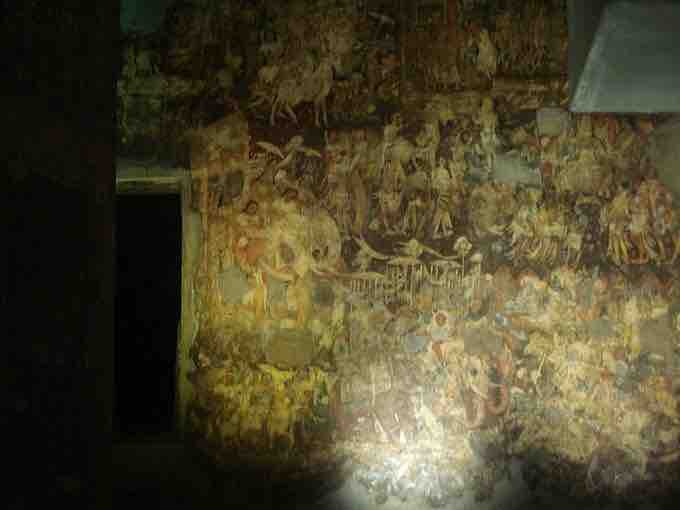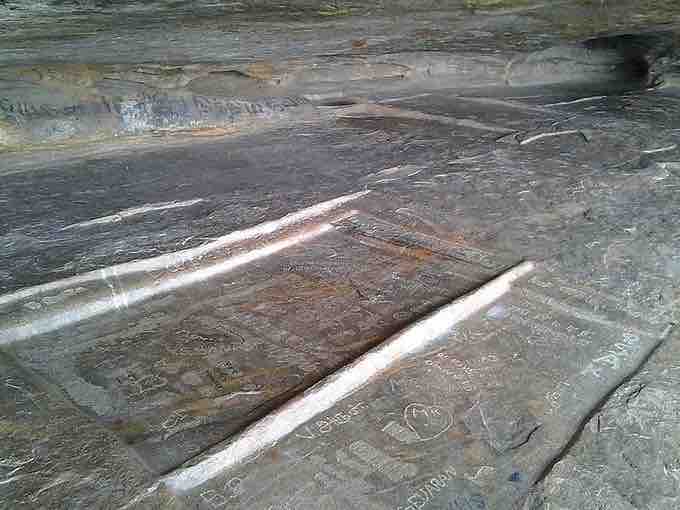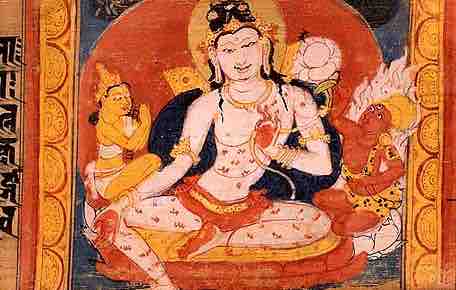The Gupta Empire
The Gupta Empire was an ancient Indian empire that covered much of the Indian subcontinent and was run by the Gupta Dynasty from approximately 320 to 550 CE. After the fall of the Mauryan Empire in the 2nd century BCE, India had remained divided in a number of disparate kingdoms. During the late 3rd century CE, the Gupta family gained control of the kingship of Magadha (modern-day eastern India and Bengal). The period of Gupta rule is known as the Golden Age of India, as it was a time marked by unprecedented prosperity and the flourishing of the arts and sciences in India.
Art in the Gupta Empire
The rulers of the Gupta Empire were staunch supporters of the arts, science, literature, and architecture. In addition to patronizing the art of the Hindu religion, which the majority of the rulers subscribed to, the Guptas were known also for their support of Buddhist and Jain art and culture. In particular, Gupta period Buddhist art was quite influential in most of East and Southeast Asia. The Ajanta caves, Buddhist rock-cut architecture dating from the 2nd century BCE to 600 CE, contain wall paintings that were created during the Gupta period. The paintings depict the Jataka tales and are considered to be masterpieces of Buddhist religious art. In addition, the Gupta Empire supported the Buddhist Universities of Nalanda and Vikramasila.
Ajanta Cave Painting
A wall painting from the Ajanta Caves, painted during the Gupta dynasty c. 6th century CE.
Medieval India
The Gupta Empire quickly declined under the successors of Chandragupta II. In the year 480 CE, the Huns—nomadic-pastoralist warriors from the Eurasian steppe—launched an invasion of India, and by the year 500 CE, they had overrun the Gupta Empire. Though the Huns were eventually driven out of India, the Gupta Empire would never recover.
The disintegration of the Gupta Empire towards the end of the 5th and 6th centuries triggered what is known as the medieval period in India (c. 8th-13th centuries CE). This period was marked by the appearance of a multitude of states and dynasties who were often in conflict with one another. The dynasties of Medieval India were predominantly Hindu, though some were Jaina and a very few were Buddhist. Islamic invasions in India began as early as the 8th century, and by the early 12th century, almost all of northern India had been conquered. The Hindu kingdoms of medieval India fell easily to the Islamic invaders, and soon the majority of India was under varying degrees of Islamic control. The impact of Islam on Indian art was initially quite destructive, but it eventually resulted in a synthesis of styles and the development of new and important works of art.
Cave Murals
The Ellora caves consist of 34 rock-cut temples and monasteries belonging to Buddhist, Hindu, and Jaina faiths, built between the 5th and 10th centuries. The majority of the earlier caves were Buddhist, while caves constructed in the 9th and 10th centuries were Hindu and Jain. The caves contain many different elaborately carved rooms as well as figures of gods, stupas, and decorative work, all carved in stone. Frescoes on the walls and ceilings of both the Ajanta and Ellora caves are believed to date from the early medieval period, between the 8th and 10th centuries, and illustrate various Hindu, Buddhist, and Jain themes.

Ajanta cave painting
An example of a painting from one of the Ajanta caves.
Sittanavasal dates from the 2nd century and is the most famous of the Jain rock-cut monasteries. It contains remnants of beautiful frescoes believed to be from the 7th-9th centuries. Again, the themes of the frescoes are religious and generally employ a palette consisting of black, green, yellow, orange, blue, and white. In addition to wall murals, there are paintings on the ceiling of Sittanavasal from the 9th century that depict elephants, buffalo, fish, geese, dancing girls, and lotus flowers. These frescoes, along with those of the Ajanta caves and Bagh, are considered to be the high point of Medieval Indian art.

Painting from Sittanavasal
The Samanar Padukkai at Sittanavasal.
Miniature Painting
Miniature painting is believed to have started in the eastern part of medieval India, exemplified by illustrations on palm-leaf religious manuscripts painted on the leaves and wooden covers of manuscripts. Some of the most common Buddhist illustrated manuscripts include the Astasahasrika Prajnaparamita, the Pancharaksa, the Karandavyuha, and the Kalachakrayanatantra.

Detail of Illuminated manuscript
The detail on this piece of artwork was created circa 700-1100 CE.
Miniature painting is thought to have developed slightly later in western India, somewhere between the 10th and 12th centuries, and it generally exists with Hindu and Jain texts. Human figures are seen predominantly from a profile view, with large eyes, pointy noses, and slim waists. The color palette often employs black, red, white, brown, blue, and yellow. While it is believed that miniature painting came into existence during the medieval period, it was to flourish extensively from the 16th to 19th centuries during the Mughal empire.